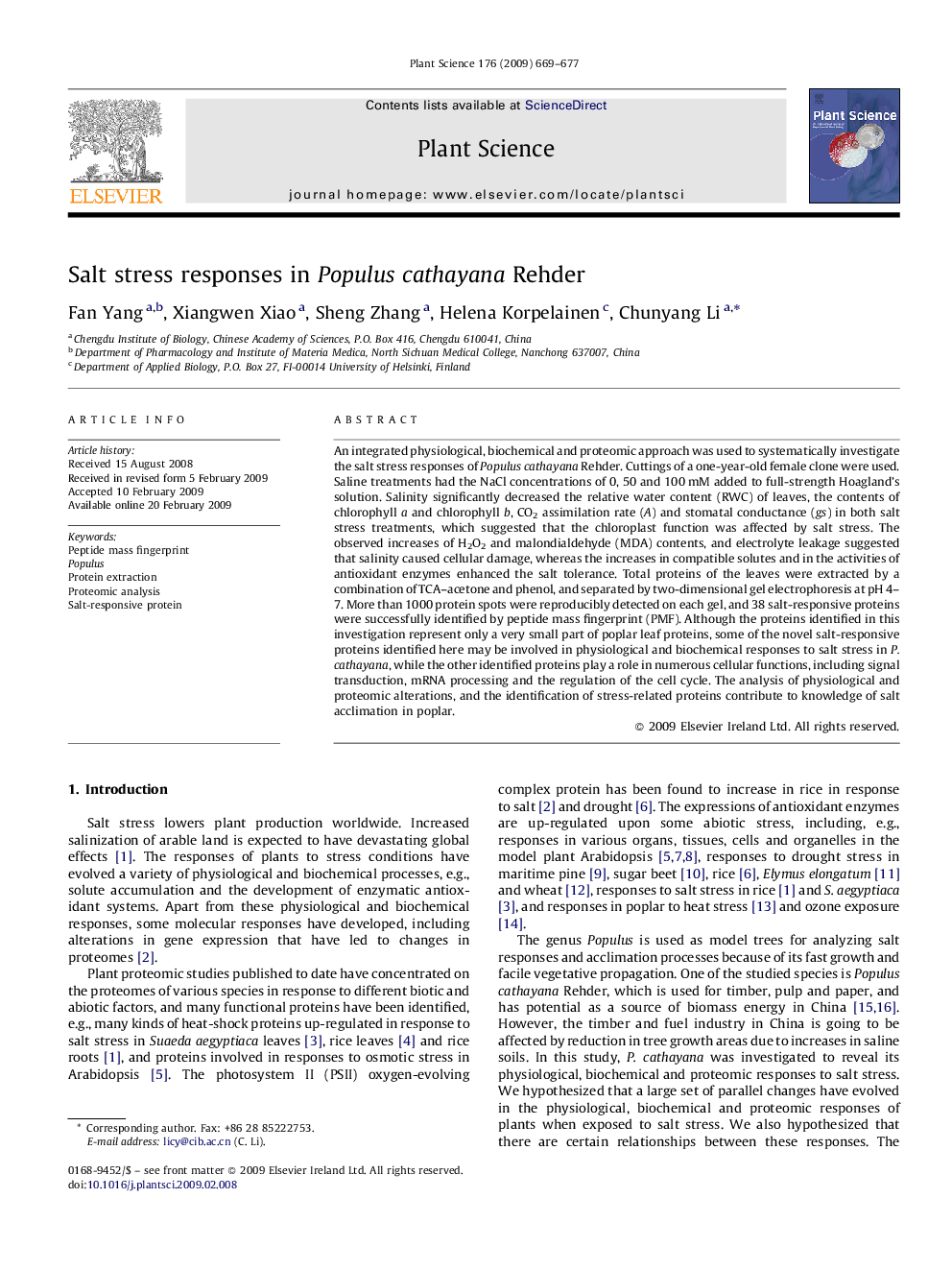| Article ID | Journal | Published Year | Pages | File Type |
|---|---|---|---|---|
| 2017670 | Plant Science | 2009 | 9 Pages |
An integrated physiological, biochemical and proteomic approach was used to systematically investigate the salt stress responses of Populus cathayana Rehder. Cuttings of a one-year-old female clone were used. Saline treatments had the NaCl concentrations of 0, 50 and 100 mM added to full-strength Hoagland's solution. Salinity significantly decreased the relative water content (RWC) of leaves, the contents of chlorophyll a and chlorophyll b, CO2 assimilation rate (A) and stomatal conductance (gs) in both salt stress treatments, which suggested that the chloroplast function was affected by salt stress. The observed increases of H2O2 and malondialdehyde (MDA) contents, and electrolyte leakage suggested that salinity caused cellular damage, whereas the increases in compatible solutes and in the activities of antioxidant enzymes enhanced the salt tolerance. Total proteins of the leaves were extracted by a combination of TCA–acetone and phenol, and separated by two-dimensional gel electrophoresis at pH 4–7. More than 1000 protein spots were reproducibly detected on each gel, and 38 salt-responsive proteins were successfully identified by peptide mass fingerprint (PMF). Although the proteins identified in this investigation represent only a very small part of poplar leaf proteins, some of the novel salt-responsive proteins identified here may be involved in physiological and biochemical responses to salt stress in P. cathayana, while the other identified proteins play a role in numerous cellular functions, including signal transduction, mRNA processing and the regulation of the cell cycle. The analysis of physiological and proteomic alterations, and the identification of stress-related proteins contribute to knowledge of salt acclimation in poplar.
